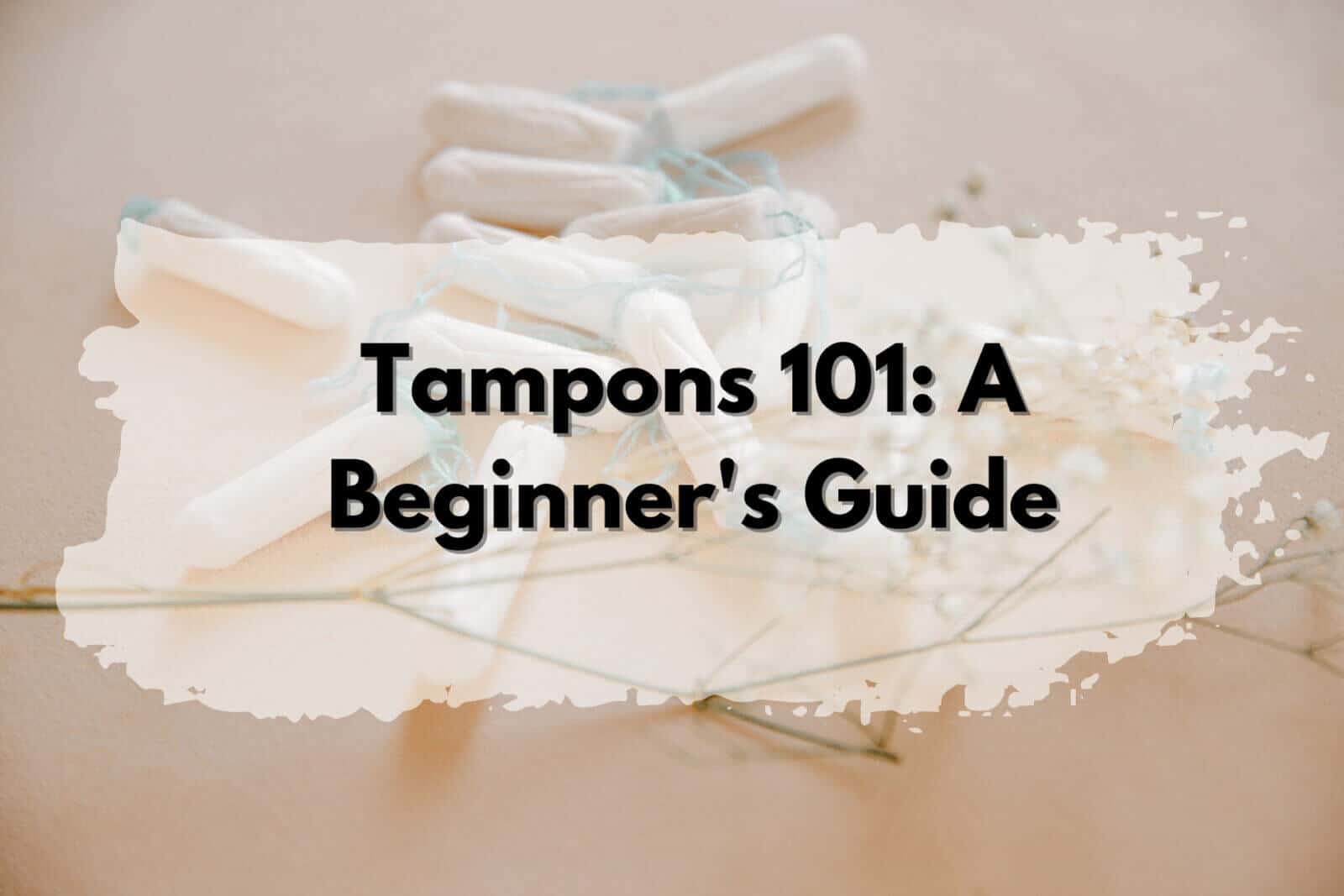Tampons are one of the most reliable and inexpensive forms of menstrual protection, but it can be intimidating to know how to use them. If you’ve ever used a tampon for the first time, or if you’re wondering why your tampon string is so long, read on.
This article will address: what a tampon is and where they come from; how they work; different types of tampons; when to change your tampon; and more.
What is a tampon and how does it work?
A tampon is a small, cylindrical device that is inserted into the vagina to absorb menstrual blood. Tampons come in different sizes, and there are both applicator and non-applicator varieties.
Tampons work by absorbing the blood and fluid from your uterus. They have a built-in string that aids in removal.
What type of tampon should I use?
The first part of this question is easy: you need to be using a regular/super absorbency tampon if your flow is heavy and needs more protection (i.e., on the heaviest day). If your flow is normal, light, or medium, then you can use a regular absorbency tampon.
For the second part of the question, it depends on how your body works. If you have a heavy flow and find that regular absorbency tampons are not working for you, then you should switch to using super absorbency tampons. Conversely, if you have a light or medium flow and are using super absorbency tampons, you may want to switch to regular absorbency tampons.
It’s also worth mentioning that there are different types of tampons for different activities. There are “sport” tampons that have a higher absorbency and are designed for more vigorous activities (like swimming or running).
Types of tampons
Knowing the various types of tampons can help you choose the right one for your needs.
The most common type of tampon is the applicator tampon. This type has a plastic or cardboard applicator that helps insert the tampon into the vagina. There are also non-applicator tampons, which are inserted using only your fingers (these can be harder to use for beginners, so it’s recommended that you start with applicator tampons).
There are also different absorbencies for tampons. As mentioned before, if your flow is heavy then you’ll need a tampon with more absorbency (like a super or maxi absorbency tampon). If your flow is light to medium, then you can use a regular absorbency tampon.
When should I change my tampon?
Ideally, you want to keep your tampon in for no more than four hours at a time (and never overnight). If you’re using an applicator style of tampon, then the string on it will be able to tell you when you need to change it. With a non-applicator tampon, you will want to pay attention and check your pad or panties often.
One thing that can make this difficult is if the absorbency of the tampon isn’t high enough (i.e. if you’re using regular absorbency when you should be using super absorbency). If this is the case, then you’ll likely need to change your tampon more often than every four hours.
How do I insert a tampon?
There are a few different ways to insert a tampon. The easiest way is to use the applicator that comes with the tampon.
- Put the tampon in the applicator, and then push it into your vag!na until the applicator is fully inserted (the top of the tampon should be sticking out of your vag!na).
- Gently remove the applicator and discard it.
If you’re using a non-applicator tampon, then follow these steps:
- Wet the tampon with water, and
- Then insert it into your vag!na (similar to how you would insert a finger).
- Push the tampon in until it’s fully inserted and leave the string hanging out (again, it should be sticking out of your vag!na).
In both cases, you want to use your finger to feel around and make sure that the tampon is not being pushed in too far. Make sure that the string is also hanging outside of your body so that you can easily remove it when changing a tampon. To remove a tampon, gently pull on the string until it comes out.
Removing a tampon
When removing a tampon, you want to be gentle. Grip the string and slowly pull it out of your vag!na. If needed, use a mirror to help you see what you’re doing. If the tampon is difficult to remove, try using a little water to help lubricate it. If you still can’t remove the tampon, then go see your doctor.
Tips for using tampons
There are a few tips that can help you when using tampons. One is to use unscented tampons if possible (or scented ones with an applicator). Scented tampons may be irritating and uncomfortable, which will make it harder for you to insert them comfortably into your vag!na. You also want to avoid using tampons with additives, as they can be harmful to your body.
Another thing to keep in mind is that you should never use a tampon while you’re sleeping. It’s important to change your tampon every four hours, so if you’re sleeping for eight hours then that means you’ll need to change your tampon twice during the night. This can be very hard to do, especially if you don’t have a place where you can easily change your tampon while sleeping (like in the middle of an airport, etc).
Finally, keep in mind that younger girls don’t need to use tampons right away. If this is something that scares or confuses you, then you can wait until later to start using them. You should talk with your doctor if this is the case and they will help you figure out what’s best for your body!
Thoughts
Tampons are designed to help you manage your menstrual flow, but they can also be a little confusing to use at first. By following these tips and guidelines, you should be able to figure out how to use tampons comfortably and without any problems. Remember to always consult with your doctor if you have any questions or concerns!















